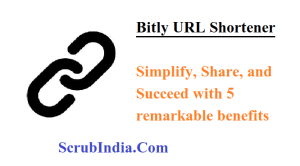
Exploring the Top Web Page Design Software: Crafting Digital Excellence
Exploring the Top Web Page Design Software: Crafting Digital Excellence In this post, we will delve into the world of web page design software, exploring its significance, key features, and some of the top options available to help you craft web pages that stand out in the virtual landscape. In today’s digital age, a compelling online presence is crucial for businesses, organizations, and individuals alike. Whether you’re creating a personal blog, launching an e-commerce platform, or developing a professional portfolio, the cornerstone of success lies in your web page design. To help you achieve your digital ambitions, the right web page design software is essential. The Importance of Web Page Design Software Before we dive into the details of web page design software, let’s understand why it is so important in today’s digital era. A well-designed website not only attracts visitors but also keeps them engaged and encourages them to take desired actions, whether that’s making a purchase, signing up for a newsletter, or simply exploring your content. Creating a Visual Identity: Web page design software allows you to establish a unique and memorable visual identity for your website. It helps you select colors, fonts, and layouts that reflect your brand’s personality and resonate with your target audience. Enhancing User Experience: A user-friendly and intuitive website is more likely to retain visitors. Effective web design software helps you create a seamless and enjoyable user experience by optimizing navigation, responsiveness, and load times. Boosting SEO: Search engines like Google favor well-structured and aesthetically pleasing websites. Modern web page design software often comes with SEO-friendly features that can improve your website’s ranking on search engine results pages (SERPs). Staying Competitive: In a competitive online landscape, a visually appealing and functional website is essential to stand out. Your web design can be a key differentiator, helping you gain an edge over your competitors. Now that we’ve highlighted the importance of web page design software, let’s explore some of the key features you should look for in such tools. Key Features of Web Page Design Software When selecting web page design software, it’s essential to consider your specific needs and objectives. However, some features are universally important: Drag-and-Drop Editor: A user-friendly interface with a drag-and-drop editor simplifies the design process, making it accessible even to those with limited technical skills. Templates and Themes: Pre-designed templates and themes can serve as a starting point for your web design. Look for software that offers a variety of options to suit different industries and styles. Customization Options: The ability to customize templates, layouts, fonts, colors, and other design elements is crucial for creating a unique and personalized website. Responsive Design: Ensure that the software allows you to create responsive designs that adapt seamlessly to different screen sizes, including smartphones and tablets. E-commerce Integration: If you plan to sell products or services online, opt for software that supports e-commerce features such as shopping carts, payment gateways, and inventory management. SEO Tools: Look for built-in SEO tools or plugins that help you optimize your website for search engines, including meta tags, alt text, and structured data. Analytics and Reporting: Access to website analytics and reporting features can help you track visitor behavior, monitor performance, and make data-driven improvements. Collaboration and Publishing: If you’re working with a team, consider software that supports collaboration features and provides easy publishing options. With these features in mind, let’s explore some of the top web page design software options available today. Top 6 Web Page Design Software WordPress: Ease of Use: WordPress is known for its user-friendly interface, making it accessible to beginners. Customizability: With thousands of themes and plugins, you can customize your site to your heart’s content. SEO-Friendly: Various SEO plugins like Yoast SEO ensure your website is search engine optimized. Community Support: The large WordPress community means there are countless resources and forums for troubleshooting and learning. E-commerce Integration: WooCommerce is a powerful e-commerce plugin that seamlessly integrates with WordPress. Wix: Drag-and-Drop Editor: Wix offers an intuitive drag-and-drop editor, making it easy to create a stunning website. Templates: Choose from a vast library of templates suitable for different industries and purposes. Mobile Optimization: Wix ensures your site is mobile-friendly and optimized for various devices. App Market: Access a wide range of apps to add functionality to your site, from contact forms to e-commerce solutions. Squarespace: Design-Centric: Squarespace is renowned for its elegant and design-focused templates. Integrated Blogging: Ideal for bloggers, Squarespace offers seamless blogging features. Built-In SEO Tools: The platform includes built-in SEO features to improve your site’s search engine performance. E-commerce: Squarespace provides e-commerce functionality, making it suitable for online stores and businesses. Adobe Dreamweaver: Professional-Grade: Dreamweaver is a professional web design software for those who want full control over their code. Code and Visual Editing: It offers a combination of code editing and visual design tools for a comprehensive web design experience. CSS Grid Support: Dreamweaver includes features like CSS Grid support for advanced layout control. Responsive Design: You can create responsive websites with ease using Dreamweaver’s design features. Webflow: Visual CMS: Webflow combines a visual content management system with web design capabilities. Interactions and Animations: Create interactive and animated elements without coding. Hosting: Webflow provides hosting services, simplifying the process of taking your website live. Collaboration: Collaboration features make it easy for teams to work together on web projects. Shopify: E-commerce Focus: Shopify is a top choice for those looking to create an online store. Secure Payment Options: It offers secure payment gateways and inventory management tools. Customization: While primarily e-commerce-focused, Shopify allows for extensive design customization. App Store: Access a wide range of apps and extensions to enhance your online store’s functionality. Conclusion In the world of web page design, the right software can make all the difference. The keyword “web page design software” is more than just a buzzword; it represents the tools that empower individuals and businesses to create stunning and functional websites. From the user-friendly WordPress to the visually appealing Squarespace, and the
Exploring the Top Web Page Design Software: Crafting Digital Excellence Read More »









